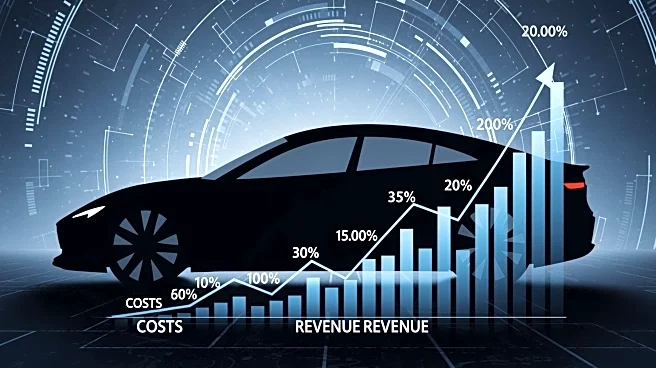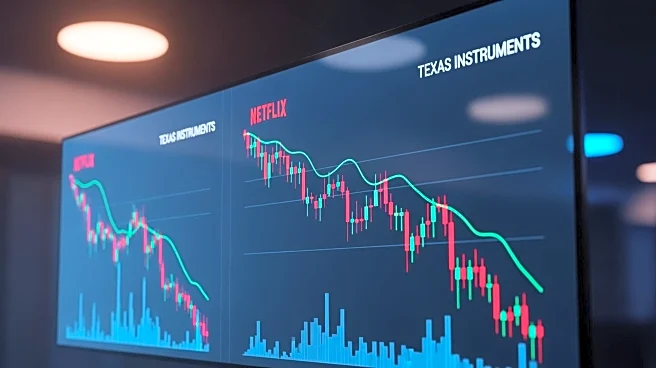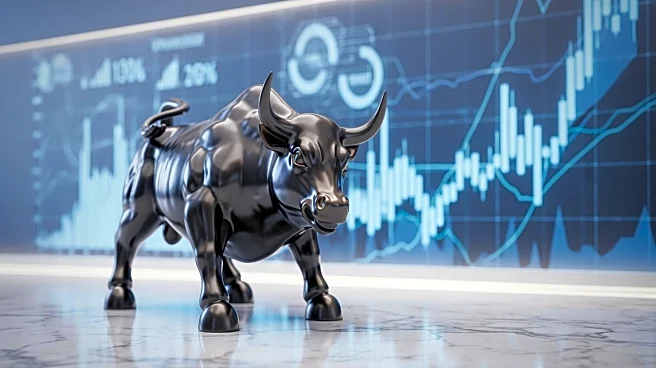What's Happening?
Tesla has reported a 12% increase in revenue for the third quarter, marking the first rise in three quarters. Despite this growth, the company's net income fell by 37% compared to the previous year. The decline in profit is attributed to lower vehicle
prices aimed at competing with Chinese manufacturers and a 50% increase in operating expenses. These expenses are partly due to investments in artificial intelligence and other research and development projects. Following the earnings report, Tesla's shares dropped by 3.8% in extended trading. This report comes after disappointing earnings from Netflix and Texas Instruments, which also saw significant stock declines.
Why It's Important?
Tesla's financial performance highlights the challenges faced by companies in balancing revenue growth with cost management. The increase in operating expenses, particularly in AI and R&D, suggests Tesla's strategic focus on innovation and competition in the global market. However, the drop in net income and subsequent stock decline reflect investor concerns about profitability. This situation underscores the broader market volatility, as major U.S. indexes experienced declines. The upcoming earnings reports from other tech giants could further influence market trends and investor sentiment.
What's Next?
With six trading days left in October, the market is anticipating earnings reports from major tech companies like Alphabet, Apple, Meta, and Microsoft. These reports have the potential to shift market dynamics and investor confidence. Tesla's focus on AI and R&D may lead to future innovations, but the company will need to address cost management to improve profitability. Investors will be closely monitoring Tesla's strategies to compete with international manufacturers and its ability to leverage technological advancements.
Beyond the Headlines
Tesla's investment in AI and R&D projects reflects a broader industry trend towards technological innovation and automation. This focus on cutting-edge technology could lead to long-term shifts in the automotive industry, influencing production processes and consumer preferences. The competitive pressure from Chinese manufacturers highlights the global nature of the automotive market and the need for strategic adaptation by U.S. companies.














